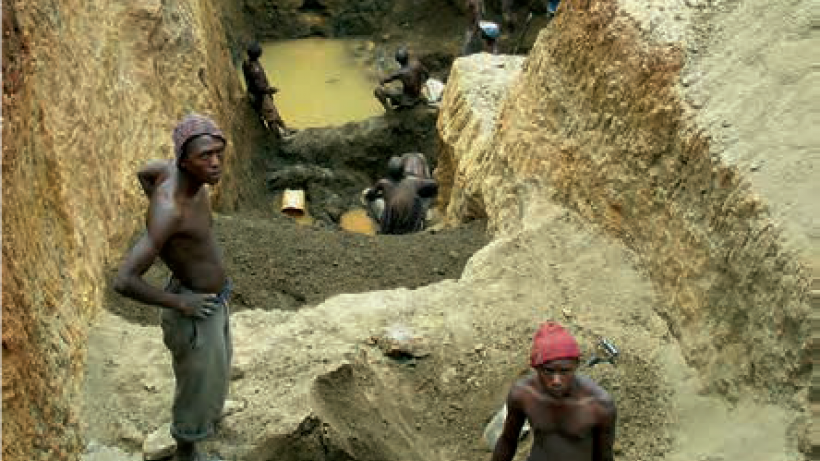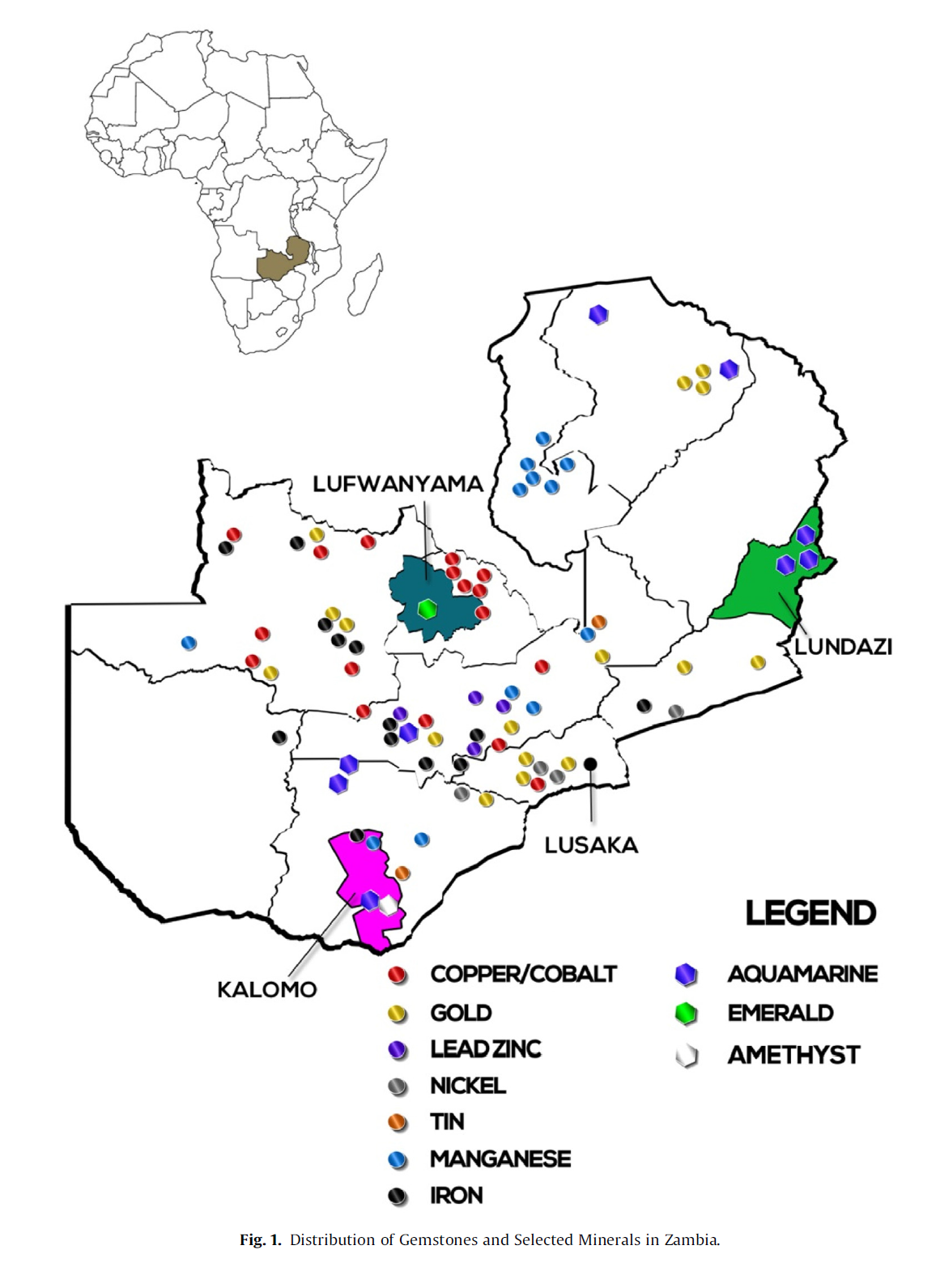
The current state of artisanal and small-scale mining in Zambia
Zambia’s development trajectory has been shaped by mining. For close to a hundred years, the extraction of copper has dominated the economy. Without exception, the firms that have controlled the sector have been large-scale, mostly foreign – albeit with periods of national ownership – had access to huge capital outlays, and have focused on copper mining. Relatively less is known about Zambia’s Artisanal Small-Scale Mining (ASM) sector.
In contrast to the firms dominating the copper extraction sector, the ASM sector is mostly done on a small scale, locally driven, has low barriers to entry, and involves different types of minerals beyond copper. It, however, represents an important and growing part of the mining industry in Zambia.
The ASM footprint in Zambia
Zambia is well endowed with a plethora of mineral deposits beyond copper, which have primarily been mined by ASM miners. These principally include gemstones – emerald, aquamarine, tourmaline, and amethyst. The map below shows the distribution of minerals across the country. More recently, gold and manganese have risen in importance. Several gold rushes have taken place over the last few years opening up new ASM sites all over the country. On top of this, a rise in demand for manganese on world markets has spurred on the production of the mineral in the northern province of Luapula. More recently, the Zambian government has also bequeathed large copper rich slug dumps in the Copperbelt province, colloquially referred to as black mountains, to political supporters introducing another category of urban politicised ASM miners.

Why does ASM matter for Zambia?
- Outside of agriculture, ASM is the most important rural activity for non-urban Africans.
- Proceeds from ASM activities provide startup capital for other activities.
- ASM provides off-season supplementary income for agricultural communities.
- ASM often comes with huge social challenges: child labour, health and safety issues, and environmental degradation.
- The specific estimated number of ASM miners in Zambia is unknown but collectively the sector is estimated to employ 13 million people, and provide livelihoods for over a 100 million people in sub-Saharan Africa.
Three things can be thought to characterise Zambia’s ASM sector:
- ASM in Zambia though highly formalised has yielded few benefits for license holders
ASM in Zambia is known for high levels of formalisation. The World Bank’s (2016) Mining and Governance review rates the extent to which ASM operators are allowed to legally operate in Zambia as ‘Very High’ (4.0 out of 4.0). This is if formalisation is understood as legalisation or the granting of legal title. This high level of formality is in contrast to most of sub-Saharan Africa where ASM is largely informal. This high level of formalisation partially emanates from the fact that ASM in Zambia has traditionally focused on the gemstone mining of emeralds and amethyst, which are found in restricted zones that are mapped out as areas under license. What the Zambia case reveals is that formalisation, or more accurately legalisation, has done little to unlock the benefits that are often touted as the outcomes of formalisation.
For instance, Siwale and Siwale (2017) find that even though emerald ASM miners are in possession of mining licenses, they have had limited success in accessing finance, technology, and institutional support from the state. Siwale (2018) finds that in the amethyst sector formalisation has given rise to different mining arrangements with varying consequences. Three types of mining arrangements have emerged: formalized, mine-owner driven enterprises that resemble modern firms and are growth oriented, quasi-formal joint-production arrangements involving degrees of formality and informality, and illegal ventures. Another contingent of ASM miners that also emerges are individuals who hold licenses for speculative purposes. What is clear is that formalisation is a necessary but insufficient condition for the development of the sector.
- ASM in Zambia is rapidly changing
ASM in Zambia has traditionally been concentrated in the gemstone sub sector, primarily emeralds and amethyst mining. However, recent discoveries of gold in numerous locations in the country is changing the narrative. Gold mining, in particular, has attracted the state’s attention with gold panning certificates issued then quickly suspended with the objective of better organising the sector. Both presidential and ministerial statements exalting the role that gold mining can play in stabilising the economy have been issued.
Additionally, due to the rise in demand for electric cars in the West, the demand for manganese, a key component in the production of lithium batteries, has grown rapidly. In 2018 alone exports of manganese in Zambia nearly doubled from 33,000 to 57,000 tons (Lusaka times, 2019). This new ASM activity differs significantly from traditional ASM in Zambia. It is in contrast characterised by high levels of informality. The more traditional challenges that occur with informal mining are therefore commonplace – lack of safety standards, environmental concerns and child labour practices. Much of what we know about this emerging sector, however, remains anecdotal and more research is needed to better understand the evolving nature of the sector. A coordinated approach is needed if this diversity is to be harnessed and well managed.
- The state’s role in ASM has been inward facing
State institutions in Zambia have, for the large part, been disinterested in the activities of ASM at best, and regarded them as borderline criminal elements at worst. Consequently, the regulatory and incentive structure has not always been tailored for ASM. Part of the reason for this has been a traditional focus on large-scale mining, which has provided a steady flow of revenues and been the mainstay of the Zambian economy. This is best illustrated in the area of mining taxation policy. The Zambian government has undertaken numerous policy changes in the mining taxation system aimed at large-scale mining firms that have inadvertently negatively affected ASM miners.
For instance, changes in the payment of royalties in 2015 significantly increased the tax burden of ASM operators but was in fact a policy change aimed at large-scale copper producers. The effects of this focus extends beyond taxation policy to environmental regulation as well. Corresponding state support and the provision of essential public goods to ASM miners has also been lacking but the requirements for area fees, taxes, and royalties, and the compliance burden of meeting state regulations, has only been growing.
Policy implications: Is ASM a question of livelihoods or an expansion of the revenue base?
Tying everything together, the Zambian government must consider whether ASM should be treated as a poverty driven activity and hence should focus on livelihoods, or whether the state should focus on generating revenue from the sector. In policy documents the Zambian government views the sector as a vehicle for job creation and economic diversification. However, from the experiences and research studies from other countries, the government should consider approaching the sector as a conduit for livelihoods and rural enterprise support with only a long-term view to tax generation.
References
Lusaka Times (2019). “President Lungu’s Full Speech During the Opening of Parliament” Accessible: https://www.lusakatimes.com/2019/09/14/president-lungus-full-speech-during-the-opening-of-parliament-2/
Mwanakatwe, M. (2019). “ Speech Delivered By Hon. Margaret D. Mwanakatwe MP, Minister Of Finance At The Sales Tax Consultative Meeting With Business Community” 3RD MAY 2019, INTER CONTINENTAL HOTEL, LUSAKA
Rose, M. (2018). “Govt gives Jerabos 10% sake in Black Mountain” The Mast Newspaper Accessible: https://www.themastonline.com/2018/02/28/govt-gives-jerabos-10-stake-in-black-mountain/
Siwale A., (2018) Can rural producer organizations transform rural production and trade? The case of Zambia's artisanal and small-scale mining associations Resources Policy Vol 59, 506-515
Siwale, A and T Siwale (2017), “Has the promise of formalising Artisanal and Small-scale mining (ASM) failed? The case of Zambia, The Extractive Industries and Society, 4: 191–201.
The Zambian Observer (2019), “Mwinilunga Gold Rush awaits Zambia’ Accessible https://www.zambianobserver.com/mwinilunga-gold-rush-awaits-zambia/
World Bank (2016), The mining investment and governance review (MinGov): Zambia mining investment and governance review final report, Washington: World Bank.

